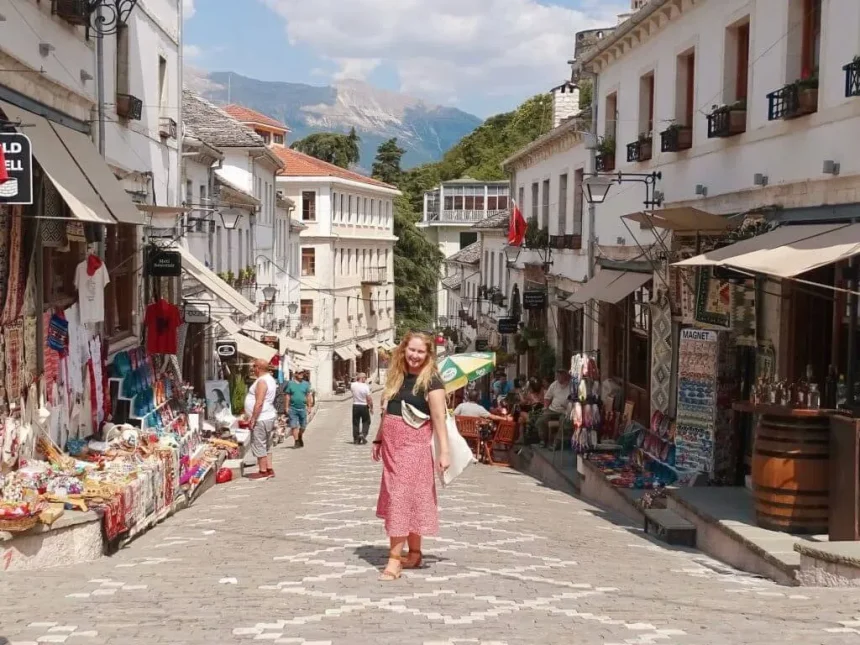Planning Your Solo Europe Adventure
Starting your solo travel Europe adventure means getting the basics right from the jump. First, pick beginner-friendly destinations if it’s your first time traveling alone. Places like Amsterdam, Lisbon, or Prague offer great vibes, easy navigation, and plenty of solo traveler resources. These cities are safe, welcoming, and perfect for building confidence on your own.
When crafting a Europe solo travel itinerary, keep it flexible. Don’t overbook yourself—allow room for spontaneity and rest. Plan major sights and transport in advance but leave some free days to explore or relax. This balance helps you avoid burnout and keeps things enjoyable.
Budgeting for solo travel is key since you’ll cover all costs yourself. Look into affordable lodging options like hostels for solo travelers Europe-wide, and consider public transport passes to save money. Track expenses daily to stay on target and avoid surprises.
Packing light is a game-changer. Bring versatile clothes, limit shoes to two pairs, and avoid bulky items. A lighter pack means easier movement across cities and less fatigue, especially if you’re using multiple transport modes. Remember, you can always buy essentials locally if needed.
Starting with these steps sets a strong foundation for a safe, enjoyable, and smooth solo travel experience across Europe.
Staying Safe as a Solo Traveler
Traveling solo in Europe is exciting, but safety should always come first. Here are some general safety tips to keep in mind:
- Stay aware of your surroundings and trust your instincts.
- Keep your valuables secure and avoid flashing expensive gear.
- Use well-reviewed accommodations like hostels or hotels with good solo travel reputations.
- Share your travel plans and check in regularly with family or friends back home.
- Avoid walking alone late at night in unfamiliar or poorly lit areas.
Safety for Solo Female Travelers
If you’re a woman traveling alone, Europe is generally safe, but these additional tips can provide peace of mind:
- Dress modestly, especially in more conservative areas, to avoid unwanted attention.
- If possible, book accommodations specifically known for hosting solo female travelers.
- Use reputable taxi or ride-share services rather than hitchhiking or unmarked cabs.
- Be cautious when accepting drinks or invitations from strangers.
- Carry a whistle or personal alarm for added security.
Emergency Preparedness
Being prepared for emergencies can save you a lot of stress:
- Know the local emergency numbers (112 works across Europe).
- Keep a copy of your passport, ID, and travel insurance details handy.
- Have a small first-aid kit and any necessary medications with you.
- Learn basic phrases in the local language to ask for help if needed.
- Download offline maps and emergency contact apps to stay connected if roaming is limited.
By following these safety tips, you can focus more on enjoying your solo exploration and less on worrying about what-ifs.
Navigating Europe Solo
Getting around Europe by yourself can seem tricky at first, but once you get the hang of it, it’s pretty straightforward. Here’s how to make travel smooth whether you’re hopping on a train, renting a car, or staying connected.
Mastering Public Transport
Europe’s public transportation is excellent and budget-friendly, perfect for solo travel. Trains, buses, and subways are well-timed and reach most places.
- Buy tickets online: Save time and sometimes money by purchasing tickets ahead through apps or websites like Eurail or local transit systems.
- Use regional passes: Look for day or regional passes if you plan multiple trips in one city or area.
- Download transit apps: Apps like Citymapper and Google Maps can guide you step-by-step.
- Validate tickets: In some countries, you must validate your ticket before boarding the train or bus—don’t skip this or you could face fines.
Driving in Europe
If you prefer more freedom, renting a car is a great option, especially for exploring remote spots.
- Know the rules: Rules and road signs can vary. For example, many European countries drive on the right, so watch your speed limits and seatbelt laws.
- International driver’s permit: Check if you need this before renting.
- Parking: Plan where to park beforehand to avoid fines or towing.
- Navigation: Use apps with offline maps in case you lose service.
Staying Connected
Staying connected is key for navigation, safety, and keeping in touch with people.
- Local SIM cards: Buying a local SIM with data is often cheaper than roaming.
- Wi-Fi availability: Many cafes, hostels, and public spots offer free Wi-Fi.
- Backup options: Carry a portable charger to keep your phone powered during long days.
- Emergency contacts: Keep important numbers saved on your phone and a written copy just in case.
Mastering transport and connectivity helps you travel confidently and stress-free on your solo Europe trip.
Making Connections and Combating Loneliness
Solo travel in Europe can sometimes feel a bit lonely, but there are plenty of ways to meet people and build connections while on the road.
Staying in Social Accommodations
Hostels, guesthouses, and shared apartments are great spots to meet fellow travelers. Many hostels organize group dinners, pub crawls, and other social events specifically for solo travelers. Booking a dorm room or a social space can open the door to new friendships.
Joining Tours and Activities
Signing up for local tours, cooking classes, or group activities puts you around like-minded people who want to explore and have fun. Walking tours, bike trips, or wine tastings are especially popular in Europe and provide easy opportunities to chat and connect.
Connecting with Locals
Don’t be shy to strike up conversations with locals at cafés, markets, or events. Using apps like Meetup or Couchsurfing can help you find local gatherings or people interested in showing you around. Engaging with locals deepens your cultural immersion and can make your solo trip truly memorable.
By staying in social accommodations, joining group activities, and reaching out to locals, you’ll find that solo travel doesn’t mean being alone. You’ll create meaningful experiences and friendships that last well beyond your trip.
Maximizing Your Solo Travel Experience
Traveling solo in Europe is the perfect chance to dive deep into local culture and create a trip that’s all about you. Here’s how to make the most of your journey.
Embracing Local Culture
- Try local food: Visit small cafés and markets to taste authentic dishes.
- Learn basic phrases: Simple greetings or “thank you” in the local language go a long way.
- Attend local events: Check out festivals, live music, or art exhibits to connect with the community.
- Respect customs: Understanding local etiquette helps you blend in and shows respect.
Balancing Adventure and Rest
- Mix busy days with downtime: Plan sightseeing and exploration days alongside chill days to recharge.
- Listen to your body: Solo travel is freeing because you control the pace — don’t overbook yourself.
- Find quiet spots: Parks, museums, or cafés provide peaceful moments amid your adventure.
Documenting Your Journey
- Keep a travel journal: Writing down daily highlights helps you remember details and reflect.
- Take photos mindfully: Capture moments that tell your story but stay present in the experience.
- Use apps or blogs: Share your trip with friends or build memories for yourself without too much hassle.
By embracing local culture, balancing your energy, and documenting your trip, you’ll make your solo travel in Europe truly unforgettable.
Top Solo Travel Destinations in Europe
Europe offers a range of fantastic spots for solo travelers, each with its own vibe and perks. Here’s a quick guide to some of the best places to travel alone in Europe, broken down by region.
Western Europe
Cities like Paris, Amsterdam, and London are ideal for first-time solo travelers. They’re easy to navigate, packed with attractions, and have plenty of hostels and social spots. Public transport is reliable, which makes getting around solo a breeze. Don’t miss exploring street markets or sitting at a café to soak in local life.
Nordics
If you love nature and clean, safe cities, check out Scandinavia. Stockholm, Copenhagen, and Oslo offer stunning architecture, cozy cafés, and a very traveler-friendly environment. The Nordics are great for solo female travelers too, thanks to their reputation for safety. Plus, the mix of urban and outdoor activities lets you balance adventure with peaceful rest.
Central Eastern Europe
Countries like Czech Republic, Hungary, and Poland are rising stars for solo travel in Europe. Prague and Budapest offer affordable solo travel options with rich history and vibrant nightlife. These cities combine budget-friendly accommodations and plenty of tour options to help you meet other travelers.
Southern Europe
Think of places like Spain, Italy, and Greece. These spots are perfect for cultural immersion—whether it’s tasting local dishes, exploring ancient ruins, or joining lively festivals. Cities like Barcelona, Rome, and Athens are buzzing with energy and ideal for solo travelers who want adventure plus social experiences. For tips on exploring Italy, check out our Reisetipps für Italien.
No matter where you choose, each region in Europe offers unique experiences to make your solo trip unforgettable. Choosing destinations that match your travel style and comfort level is key to maximizing your Europe solo travel itinerary.










